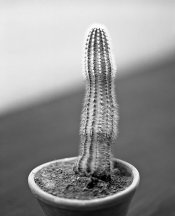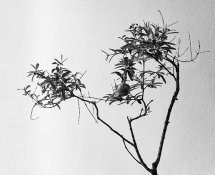Thank you JBrunner. That was my whole point. If I flip the incident meter, and assuming the typical arrangement of a light source, subject, and meter, the light falling on the incident meter will be different.
That was not your point at all. Your point was that
in any case, the light falling on a incident meter's dome if it is flipped
must be less than the light falling on the subject. You made this statement based on your incorrect belief that the reflectivity of the subject is what an incident meter measures. Now, you add specific lighting conditions (making the new statement only apply to some pictures) and make the statement that the reading is always
different (meaning that it is never the same) when the meter is flipped. So, what you just stated was not your "whole point" that you made earlier at all. It is, in fact, extremely different.
Is it wrong to think (and I tested it here) if the light source is on camera side (front lit) and meter using incident meter facing the camera, then flip it, in former case, it will (of course) read correctly, and on the latter case, it will read lower based on reflectivity of the subject?
Well, once you add some "ifs" and conditions (little things such as, oh, just where the light is coming from: the most important specification in ANY photograph) it doesn't sound all that wrong.
It is also incredibly wrong to think that the light illuminating the subject (the
main light) is always the
strongest light in the composition. It is often not. The
main light is
not defined as the
strongest light in existence when the photo was taken. It is the strongest light that is illuminating the part of the subject that you can see in the picture. If there is a stronger light behind the subject than there is in front of it, and you are shooting the front of the subject, the weaker light is still the main light, and the meter will read higher if you flip it toward the subject.
Again, you illustrated your belief that an incident meter's reading is changed by the the reflectivity of the subject. It is NOT, and this is the defining characteristic of an incident meter. The fact that it is not is pretty much the entire reason those who use them use them. This is the most basic thing to know about incident metering. Therefore, since you have shown in statement after statement that you do not understand it, it is logical that your points would be incorrect. Crap in, crap out, as the saying goes.
Again:
All that matters is the light falling on the dome. The light falling on the dome when the meter is pointed at the subject can either be greater than, less than, or equal to the light falling on the dome when the meter is pointed at the camera from the subject.
It depends. It depends on what light the subject is in compared to what light the meter is in.
As I understand it, the incident light meter measures light falling on the dome. It has no capability to distinguish light from source or light reflected from the subject. Light is light.
You are saying the words, but I do not think that you
understand them, or else you would not have said the things you have said in this thread. In fact,
the sentence prior to your "As I understand it" sentence, you say exactly the opposite when you mention the reflectivity of the subject changing an incident meter's reading.
Incident meters are very simple (another reason they are so good for so many things). They measure the light
falling on the dome, and tell you how to expose to make something that is in that same light correctly exposed. That is all you need to know to know how to use one of them. It is very self explanatory if you understand that
one thing you really need to know about incident meters. Understanding it leads you to being able to make intelligent decisions as to how to use it: If you want to expose for a thing, point the dome at the light that is illuminating the thing for which you want to expose. If you want to expose to average all of the light falling on an imaginary axis parallel to the film plane, orient the dome of the meter parallel with the film plane, from the middle of the subject. (FWIW, I almost never want the latter; the averaged exposure. I nearly always measure the light source itself.)
There are photographic situations in which the meter will read the same no matter which way you point the dome, and there are photographic situations in which the reading will change (either up
or down) when you point the dome in a different direction.
It depends. It depends on what light is hitting the dome compared to what light is hitting the subject.















